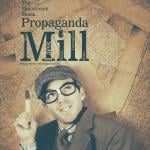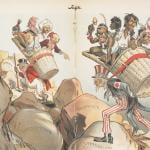In her study of Eucharist and the Poetic Imagination in Early Modern England, Sophie Read observes that since Donne never wrote directly on the sacramental debates of the Reformation era, his view has to be “reconstructed . . . from its rhetorical trace” (86).
Puns provide one source. A pun’s “potential to double and divide, to explore the limits of the language of signification, lends it to the expression or enactment of a sacramental dynamic” (86-7). His puns are “Janus-faced,” multiplying meanings.
Citing the work of Eleanor McNees, she suggests that the double-sidedness of Donne’s rhetoric reflects the rhetorical foundation of his sacramental theology. Donne wrote in one sermon, “We say the sacramental bread is the body of Christ because God hath shed his Ordinance upon it, and made it of another nature in the use, though not in the substance” (87). McNees finds in this view of the real presence an “analogy for Donne’s use of divisive poetic figures, particularly pun and paradox.”
Read offers an example from La Corona: “The last line of each of the seven sonnets forms the first line of the next, until the final line of the last turns out to have been the first line of the first, a pleasing circularity that has long been identified with the devotional practice of telling the rosary.” Along the way, words begin to “work free” from single significations, just as the bread takes on another nature in use because “God hath shed his Ordinance upon it.” Rhetorical figures take on “a sacramental function, and rhetoric and eucharist act as mutual guarantee: Donne’s confidence in their powers of truthful conveyance depends, finally, on this analogy, and on the capacity of each to underwrite the other” (87).
The fact that the eucharist can take on a new “nature” by the ordinance of God underwrites a rhetorical proliferation that is something other than Derridean dissemination, a rhetorical play that is utterly serious.











